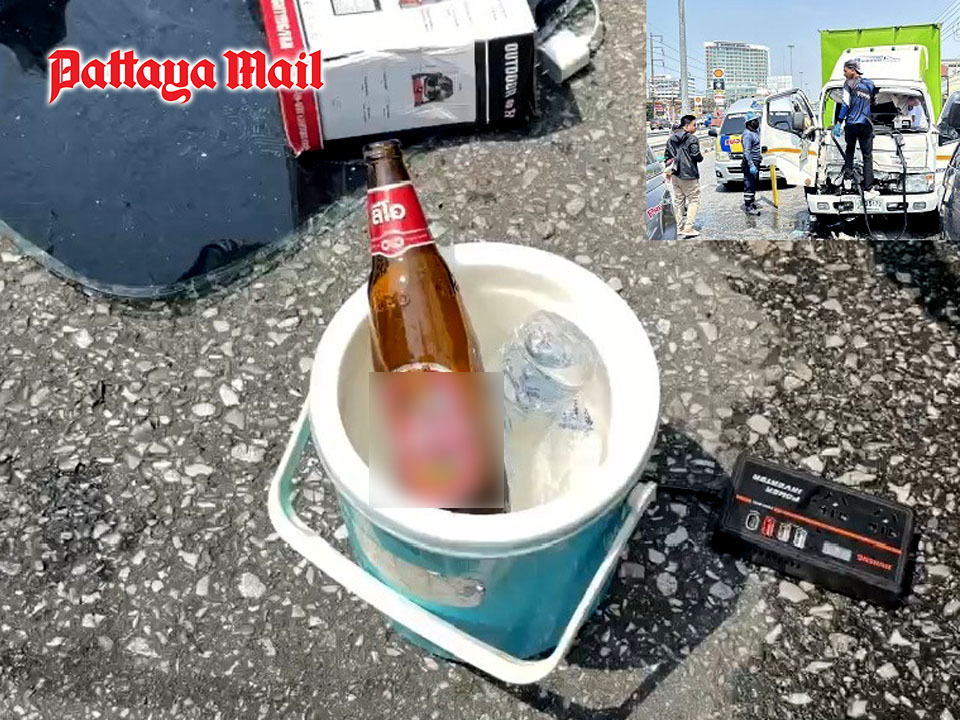
PATTAYA, Thailand – In Pattaya, police are raising awareness about the potential legal issues surrounding open bottles of liquor found in the driver’s seat of vehicles. While many Thai drivers may not be fully aware, having an open container of alcohol in the car, especially in the driver’s area, can be a violation of local laws. Police have emphasized that even if a driver is not consuming alcohol while driving, the mere presence of an open bottle can lead to fines or other legal consequences.
The law prohibits the consumption of alcohol in moving vehicles or the possession of open alcohol containers in certain areas, such as the driver’s seat. This is because it is presumed that having an open container of alcohol could encourage or indicate the intent to drink while driving, which is a safety risk. Officers are increasingly vigilant in patrolling areas like Pattaya Beach and Sukhumvit Road, where many tourists and locals may unknowingly violate this regulation.
Recent incidents highlight the dangers associated with impaired driving. On February 22, a small truck rear-ended a pickup truck, which then collided with a sedan on Sukhumvit Road in North Pattaya. The driver of the truck was trapped inside the wreckage with severe injuries. An ice cooler containing opened beer bottles was found in the truck, suggesting the driver may have been intoxicated at the time of the accident.
In another incident on January 31, a woman crashed a pickup truck into a parked car and plowed through over ten motorcycles before coming to a stop 500 meters away. She was found to be heavily intoxicated, with a blood alcohol concentration exceeding 100 mg%, far above the legal limit.
For Thai residents and visitors alike, it’s important to be aware of this rule to avoid legal trouble, particularly since alcohol consumption laws can vary from region to region. Police urge all drivers to keep bottles of liquor securely sealed and stored in the trunk or other areas of the vehicle to stay in compliance with traffic regulations and ensure safer roads for everyone.










